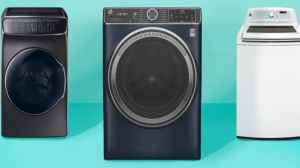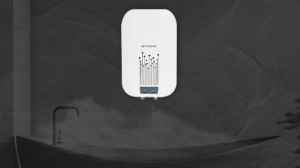As the mercury drops, a reliable room heater becomes a necessity, not a luxury. However, the market is flooded with options—from instant-heat fan blowers to silent, long-lasting oil-filled radiators—making the right selection a surprisingly complex decision. Choosing the wrong heater can lead to insufficient warmth, higher-than-expected electricity bills, or even safety concerns.
This comprehensive buying guide is designed to cut through the confusion. We'll demystify the different types of room heaters, break down the key features to look for, and provide detailed reviews of the 10 top-rated room heaters across different categories to help you select the ideal model that perfectly matches your room size, budget, and heating needs. By the end, you will be equipped to make a confident and energy-efficient purchase.
Top 10 Room Heaters: Detailed Product Reviews
Here is a detailed breakdown of 10 popular room heaters, covering specifications, benefits, limitations, and suitability to help you make an informed comparison.
Loading...
Product Specifications Comparison Table
Feature Comparison: Matching Heater Elements to Your Needs
Different heating technologies offer distinct advantages. Use this table to quickly match your priorities (instant heat, quiet operation, air moisture) to the right heater type.
Different Types Of Room Heaters
When the cold sets in, a reliable room heater is essential for localized warmth and comfort. Unlike central heating systems that warm the entire house, room heaters offer a portable, cost-effective solution for specific spaces. They primarily fall into three main categories based on their heating mechanism: Convection, Radiant, and Oil-Filled Radiators, each offering distinct advantages in speed, coverage, and operation. Understanding these types is key to selecting the perfect heater for your needs
Convection Heaters: Total Room Warmth
Convection heaters work by heating the air around a heating element, causing it to rise. Cooler air then sinks and cycles past the element, creating a continuous flow, or convection current, that gradually warms the entire room.
- Fan Heaters/Forced-Air Convectors: These are the most common type of convection heater. They use an internal fan to blow air directly over a hot coil or ceramic plate, quickly forcing the heated air out into the room.
- Pros: Quickest heating time, lightweight, and portable.
- Cons: Can be noisy due to the fan, and prolonged use may dry out the air.
- Best for: Small-to-medium rooms requiring instant, short-term heat, like a bathroom or a quick warm-up in a study
Radiant Heaters: Direct Spot Heating
Radiant heaters, also known as quartz, halogen, or infrared heaters, operate on a different principle. Instead of heating the air, they emit infrared radiation that travels directly through the air to warm people and objects in its path. This is similar to the warmth felt from the sun or a campfire.
- How They Work: They use highly heated quartz or halogen elements with reflectors to direct the warmth.
- Pros: Instant heat, silent operation, and high energy efficiency for targeted heating. They don't affect the air's humidity.
- Cons: Only warm objects are directly in front of them (spot heating), and the exposed elements can get very hot, posing a burn risk.
- Best for: Small, focused areas like a desk or a compact living space where you need immediate warmth and will remain in the heater's direct line of sight.
Oil-Filled Radiators (OFRs): Consistent, Lasting Heat
Oil-filled radiators are a type of convection heater that uses a sealed reservoir of diathermic oil. An electrical element heats the oil, which then heats the metal fins of the radiator. The heat is released into the room through convection, but the oil acts as a heat sink, retaining the warmth for a long time even after the unit is turned off.
- Pros: Provide consistent, sustained, and gentle heat, are virtually silent, and are safer for prolonged, overnight use as the exterior surface is generally not as hot as radiant elements. The heat does not dry out the air.
- Cons: Slowest to heat up, and are typically heavier and bulkier than other types.
- Best for: Bedrooms, nurseries, or large rooms where continuous, even, and quiet warmth is required for extended periods
Important Things to Consider Before Buying a Room Heater
The right heater is a balance of power, efficiency, and safety. Keep the following critical factors in mind to ensure you get the best value and performance:
Room Size and Heater Wattage: This is the most crucial factor. A small 800W quartz heater is sufficient for personal spot heating, but it won't warm a 300 sq. ft. living room.
- Small Rooms (up to 150 sq. ft.): Fan, Radiant (Quartz/Halogen), or low-power Convector heaters (1000W-1500W).
- Medium Rooms (150-250 sq. ft.): Fan/Convector heaters (1800W-2000W) or 9-11 Fin OFRs.
- Large Rooms (250+ sq. ft.): High-wattage Convector heaters (2000W) or 11-13 Fin Oil-Filled Radiators (2500W-2900W) with PTC fans are necessary for uniform warmth.
Heating Speed vs. Heat Retention:
- Quick Heat: Fan and Radiant heaters provide near-instant warmth.
- Long-Lasting Heat: Oil-Filled Radiators (OFR) take 30-45 minutes to heat up but retain heat for a long time, even after being switched off, making them more energy-efficient for sustained use.
- Safety Features: Absolutely non-negotiable, especially in homes with children or pets. Look for:
- Overheat Protection (Thermal Cut-off): Automatically shuts off the heater if internal components reach an unsafe temperature.
- Tip-Over Safety Switch: Shuts off the heater if it is accidentally knocked over.
- Cool-Touch Body: Essential for fan and convector heaters to prevent accidental burns.
- ISI Mark: An important certification indicating the product meets Indian safety standards.
Noise Level:
- Silent: OFR, Radiant (Quartz/Halogen) heaters are completely silent. Ideal for bedrooms.
- Noisy: Fan and Convector heaters use a fan, which generates a noticeable operating sound.
Impact on Air Quality:
- Non-Drying: OFR heaters warm the oil, which then radiates heat, preserving the air's oxygen and moisture. Best for respiratory health.
- Drying: Fan, Radiant, and Convector heaters heat the air directly, which can lower humidity and dry out the air, potentially causing dry skin or throat discomfort.
Making the Right Choice
Choosing a room heater depends on your primary heating goal. If you need instant heat for a brief period, a fan heater is ideal. For spot heating and efficiency when sitting still, a radiant heater is your best bet. If you need silent, consistent, and long-lasting warmth for an entire room, an oil-filled radiator is the superior choice. Regardless of the type, always prioritize safety features like a tip-over switch and thermal cut-off for peace of mind.
Read More: Top 5 Energy-Efficient Room Heaters
Disclaimer: At HerZindagi, we prioritize providing the up-to-date information on the latest trending commodities and goods. This Article is written and vetted by our in-house category authors in sync with the Google guidelines on product reviews and shoppable content. HerZindagi is in an associate partnership, so we may earn a part of the revenue when you make a purchase. We shall not be liable for any claim under applicable laws, including but not limited to the Consumer Protection Act, 2019, concerning the products. The products listed in this article are in no particular order of priority.
Loading...



